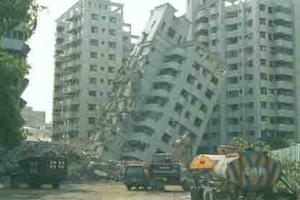DisastersProtecting buildings from earthquakes by hiding them
Engineers have come up with an inventive and exciting idea for protecting buildings from earthquakes: hide them (the buildings, that is); the engineers say that placing specialized rubber under the building would diverts certain temblor shock waves, leaving the building virtually untouched by them

Elastodynamic cloaking may prevent damage like this // Source: iranvij.ir
William Parnell of the University of Manchester in England has come up with an inventive and exciting idea for protecting buildings from earthquakes: hide them.
Parnell’s idea suggests wrapping a building’s base, or at least key components of the building such as support beams, in specialized rubber that diverts certain temblor shock waves, leaving the building virtually untouched by them.
Smithonian.com reports that the technical term for Parnell’s idea, called the elastodyamic cloak, is already in the preliminary stages of testing the idea, which based on a familiar concept: waves headed for a stationary object can be diffracted or bent so they miss it entirely.
Earthquakes are generated when two sections of the earths crust slide against each other along a fault line, releasing energy that ripples through the surrounding rock in waves. Parnell created a mathematical model that suggests it is possible to channel a seismic wave around an object by placing the object at the center of a rubber cloak placed under the building. Parnell calculates that if the rubber is stretched in a specific manner, it can absorb or change the effect of the waves.
Engineers already lay rubber shock absorbers under some buildings to protect against earthquakes, but Parnell wants to create a layer which will make waves, including Love waves, which move the ground side to side in a zigzagging motion, completely absorbed by the rubber.
Smithonian.com notes that in the event that the idea becomes a success, there are some buildings which would not be able to have rubber installed underneath them. For those buildings, rubber could be installed around support beams, pillars, and electrical components as earthquakes usually damage these components of a building, starting fires and other problems inside the building instead of forcing a building to collapse.
The idea will be put to the test in New Zealand by engineers Biswajit Banerjee and Emlio Calius at Industrial Research Limited. The engineers will create a pre-stressed region around a hole in a circular slab of rubber-like silicon. They will then send vibrations toward the center and measure whether the vibrations are diverted around the hole.
If the experiment is successful, it will be a great day for scientists and seismologists around the globe, but it will still be years before someone can build a set-up for a full-size building. The idea could work in other platforms, such as sound proofing, to give seismologists a new way to look at protecting against disastrous earthquakes.
